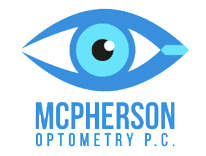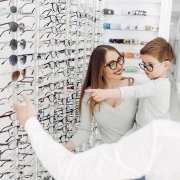Children and Visual Health: Myths About Pediatric Eye Exams
Most parents are exceptionally vigilant about their child’s health care needs. However, visiting the eye doctor is often something that gets overlooked. Visual assessment and exams are actually just as critical as part of your child’s overall healthcare plan. Unfortunately, several myths can keep caregivers from scheduling pediatric eye exams as they should.
Myth: Children don’t need an eye exam until right before they start school.
It is true that a child should have a vision exam before they start school. However, most professionals actually recommend that children have their first pediatric eye exam before the age of one. Most pediatricians do actually do a basic visual assessment soon after a baby is born. However, this basic assessment is meant to look for developmental issues and may not always catch vision problems. Eye exams in the years before school may correct problems that could cause issues once the child starts school.
Myth: Children cannot get an eye exam if they do not recognize their alphabet letters.
The eye exam that is performed on children before they recognize their letters is quite a bit different from the eye exam that is given to a school-aged child using a letter chart. The optometrist will be looking at the structures of the eye, how the eyes team together, and other aspects of visual function. Shapes, colorful images, and other items may be used to assess visual abilities as well.
Myth: Most children only need an eye exam every five years.
If a child does not have any obvious vision problems or wears glasses, you should schedule a pediatric eye exam about every two years. Children who are wearing corrective lenses do need to be seen every year. Some optometrists may recommend even more visits if your child has certain visual health or development concerns.
Schedule Your Pediatric Eye Exam in North Syracuse, NY
One of the most important things you can do for your child is to make sure their visual capabilities are as good as they can be. Optometric attention may be required to ensure that. If you believe your child has vision problems, or they need a checkup, reach out to us at McPherson Optometry.



